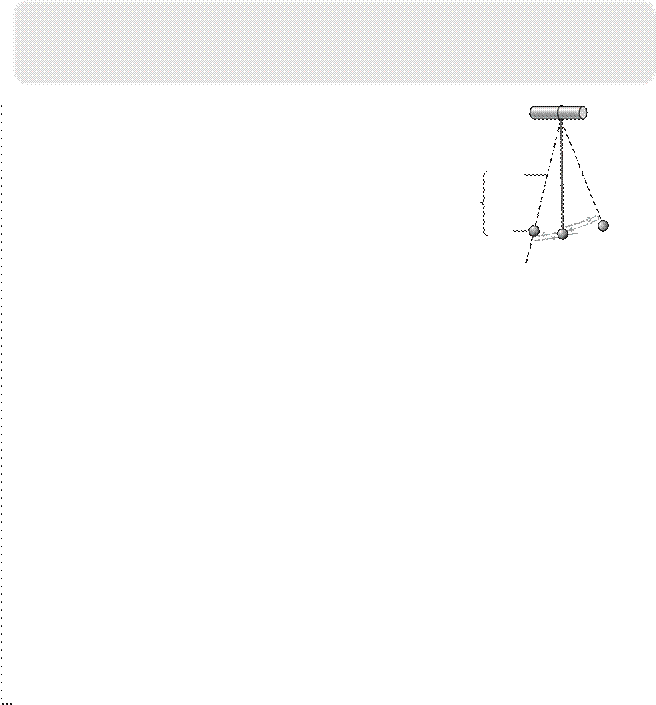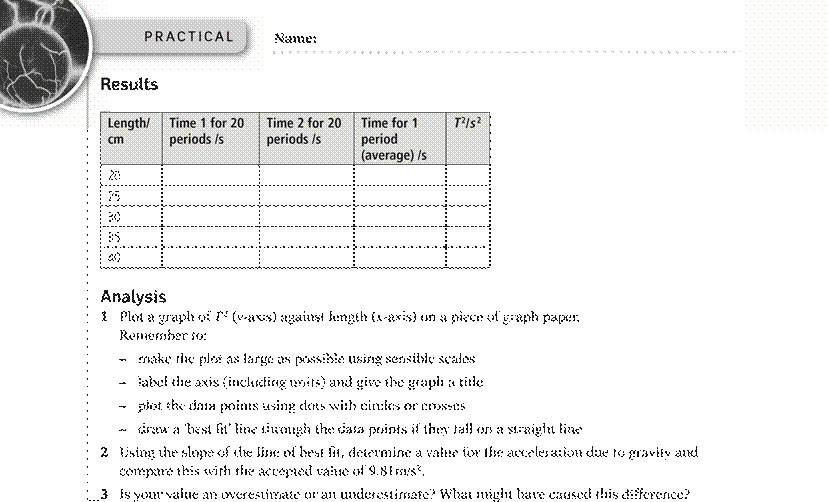
Equipment required:
A 50 cm long pendulum (bob and string) Rigid support and stand
Metre rule Stopwatch
Introduction rigid support
The period of a pendulum is defi ned as the time (in seconds) that the pendulum takes to make one complete oscillation (see page 15
in your textbook). string
To reduce the human error in determining when to start and stop simple the stop watch you must measure multiple periods, for example pendulum 20 periods, and then divide your result by the number of periods bob
 measured.
It is best to start and stop the watch when the pendulum one
completeswing is moving at its fastest, i.e. at the
bottom of the swing as it is diffi cult to determine when the pendulum has
stopped at its highest point.
measured.
It is best to start and stop the watch when the pendulum one
completeswing is moving at its fastest, i.e. at the
bottom of the swing as it is diffi cult to determine when the pendulum has
stopped at its highest point.
For small angle oscillations the period, T, of a pendulum is given by:
__
T = 2π √ _ gl or T 2 = 4____πg2 l

The length of the pendulum, l, is defi ned as the
distance between the centre of mass of the bob and the pivot point. g is
the acceleration due to gravity.
Plotting a graph of T 2 against l should produce a straight line graph through the origin by comparing T 2
= 4____πg2 l with the equation of a straight line: y = mx + c. The slope of the graph is equal to ___ 4gπ 2 . We can fi nd a value for g by determining the slope of the T 2 against l graph.
1 Fix the length of the pendulum at 20 cm.
2 Draw the pendulum back such that the sting makes a small angle to the vertical. Release the bob and allow the pendulum to oscillate to and fro.
3 Start timing when the bob has passed through the lowest position a few times.
4 Stop timing when the bob has made 20 oscillations.
5 Record the time in the table below.
6 Repeat the experiment for the pendulum at 20 cm at least one more time, preferably twice.
7 Repeat the experiment for the different lengths of the pendulum given in the table below.
© OUP: this may be reproduced for class use solely for the purchaser’s institute

© OUP: this may be
reproduced for class use solely for the purchaser’s institute
Материалы на данной страницы взяты из открытых источников либо размещены пользователем в соответствии с договором-офертой сайта. Вы можете сообщить о нарушении.